GARDEN FRESH, STILL
Good Only in Theory?
The idea has merit: flowerpots of flavorful herbs decorating windowsills and providing savory additions to meals through the winter. A good part of last season’s garden is packed in the freezer and glistening jars of canned tomatoes line shelves in the basement. The greenhouse is offering a steady supply of lettuce, arugula, and other salad greens.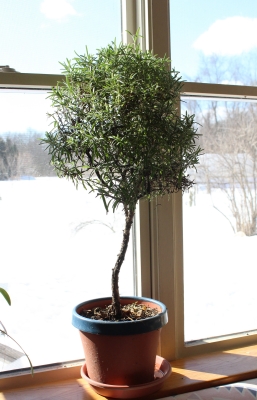
Still, I’m beginning to miss garden-fresh vegetables. Sprinkling some fresh chives on a pan of roasted potatoes might infuse the whole dish with freshness.
The problem is that chives doesn’t thrive on a windowsill, unless the windowsill is very, very sunny. Chives will grow well through the winter with artificial light, but that means a bank of lights permanently poised a few inches above the leaves — so much for the rustic charm of indoor potted herbs. And maybe my taste buds are dulled, but when I snip chives to add to a dish, I take a handful. The plant would need at least a few weeks to recover sufficiently to withstand another harvest.
The same could be said for growing parsley indoors; after each picking, you have to wait too long for another.
I haven’t thrown up my hands at the possibility of growing culinary herbs indoors through the winter. I just have to be very selective in what I grow. Any such herb must pack a lot of flavor into each leaf, survive well indoors, and look pretty. I offer at least two candidates: rosemary and bay laurel.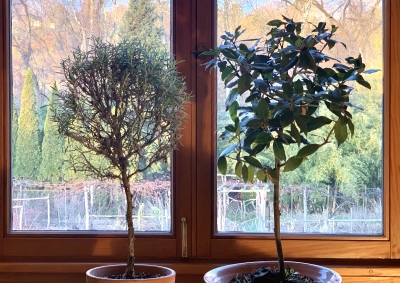
Stellar Candidates
Rosemary and bay laurel are both native to the Mediterranean region, but represent extremes in appearance. Bay laurel has a formal demeanor, made more so when the plant is shaped into some geometric form. Starting over 30 years ago, I trained my bay laurel plant to a single upright stem capped by a ball of fragrant leaves. 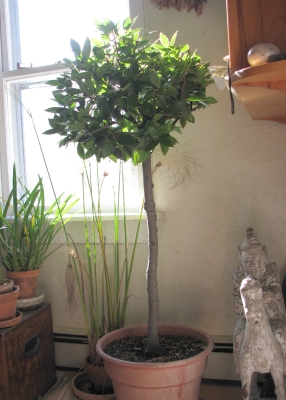 Rosemary’s natural inclination is to grow as a scraggly shrub. Some gardeners – including me – train the plants to small trees, which is very decorative and each harvest helps prune the plant to keep the head bushy.
Rosemary’s natural inclination is to grow as a scraggly shrub. Some gardeners – including me – train the plants to small trees, which is very decorative and each harvest helps prune the plant to keep the head bushy.
Both rosemary and bay laurel are perennial, woody plants. This is good because such plants have the potential to live on year after year, and as they age, they develop character. Strips of bark are peeling from the old, thickened stem of my rosemary plant, giving the plant a wizened, old look. My bay laurel stood as a two-foot-diameter ball of glossy, green leaves crowning a thick trunk, shaded ever so slightly with a patina of green algae.
Like most herbs, rosemary and bay laurel thrive best in sunny locations. You can make up for insufficient light in winter by keeping both plants cool. Neither plant minds cool temperatures — a cool house in winter is no cooler than a Mediterranean winter. Even if the plants grow little, if at all, under these conditions in winter, both have short internodes that are amply supplied with flavorful leaves. Harvests are hardly noticeable. Both plants can recuperate outdoors basking in summer sunlight.
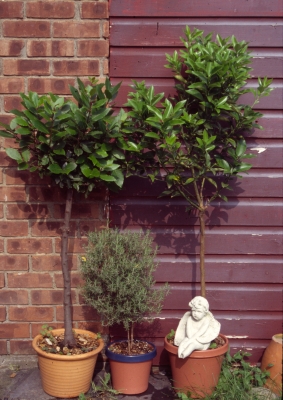
Rosemary & bay on their summer vacation with kumquat
Bye, Bye Bay
You may have noted that I’ve been referring to my miniature bay laurel tree in the past tense. That’s because recently, after 33 years, the tree and I parted ways. I realized I had too many potted plants, and, as part of the purge, bay laurel went to another home.
Not that I retract any of my praise for it as an indoor herb plant. The plant was very attractive year ‘round, and the flavor . . . dried bay leaves can’t compare with the rich, oil-y aroma of a fresh plucked leaf. The main problem was that I use it too rarely too justify the plant.
Rosemary and bay laurel are not the only possibilities in indoor herbs. I once had a lemon verbena plant which filled the air with a lemony aroma whenever its leaves were rustled as I walked past. The plant was somewhat gangly and the aroma became overpowering to the extent that IIbegan tiptoeing past the plant. When a blast of Arctic air came through the bedroom window one winter night and killed the plant, I never replaced it.
Thyme and oregano are other possibilities in indoor herbs. Both creep along the ground, so might be good for hanging baskets. Indoors in winter, with low light and cool temperatures, the plants begin to lose their leaves to look pretty ragged. And neither of these herbs have strong enough flavor to withstand repeated winter harvests. I prefer their flavors dried anyway.
For now, I will rest on my past and present laurels: one aromatic, scraggly shrub and one aromatic, tidy tree. Do you have any other especially good candidates?

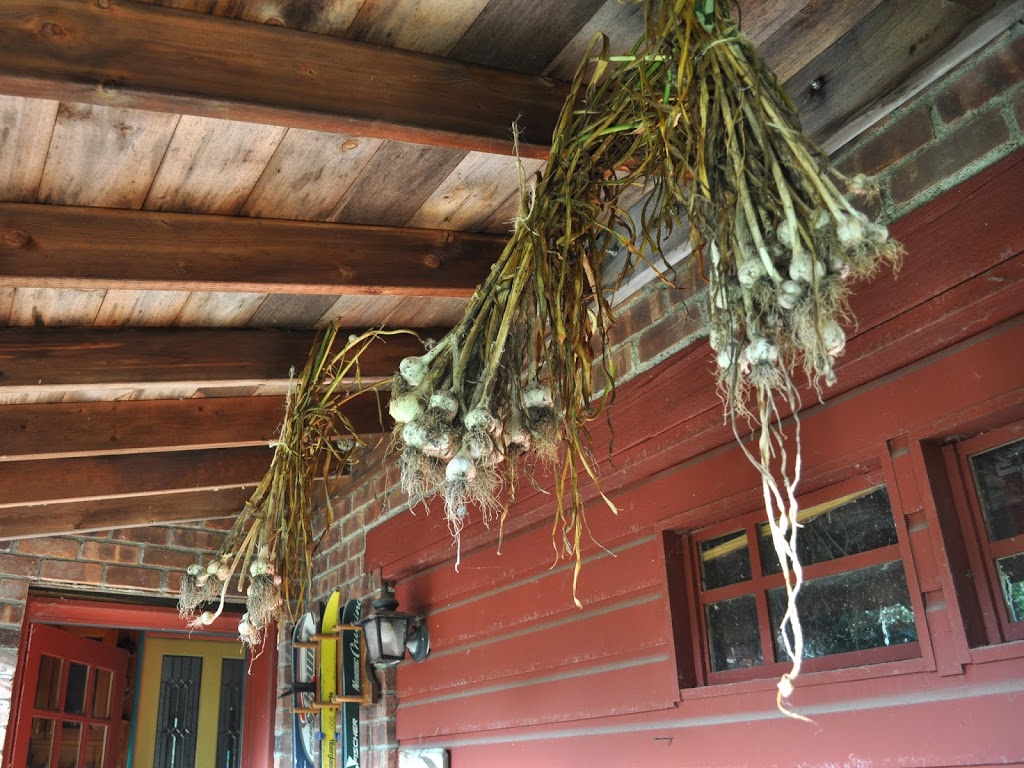

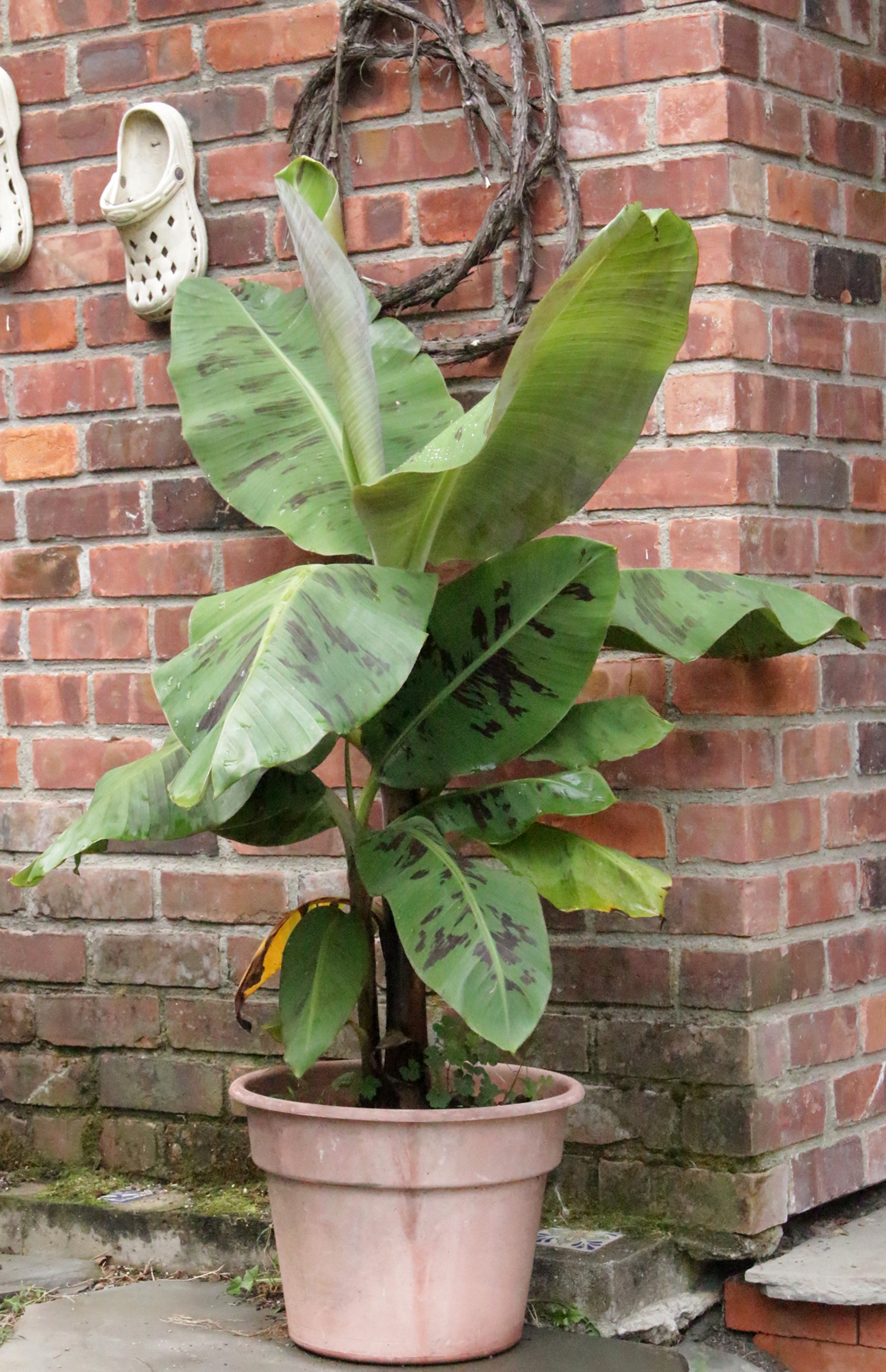
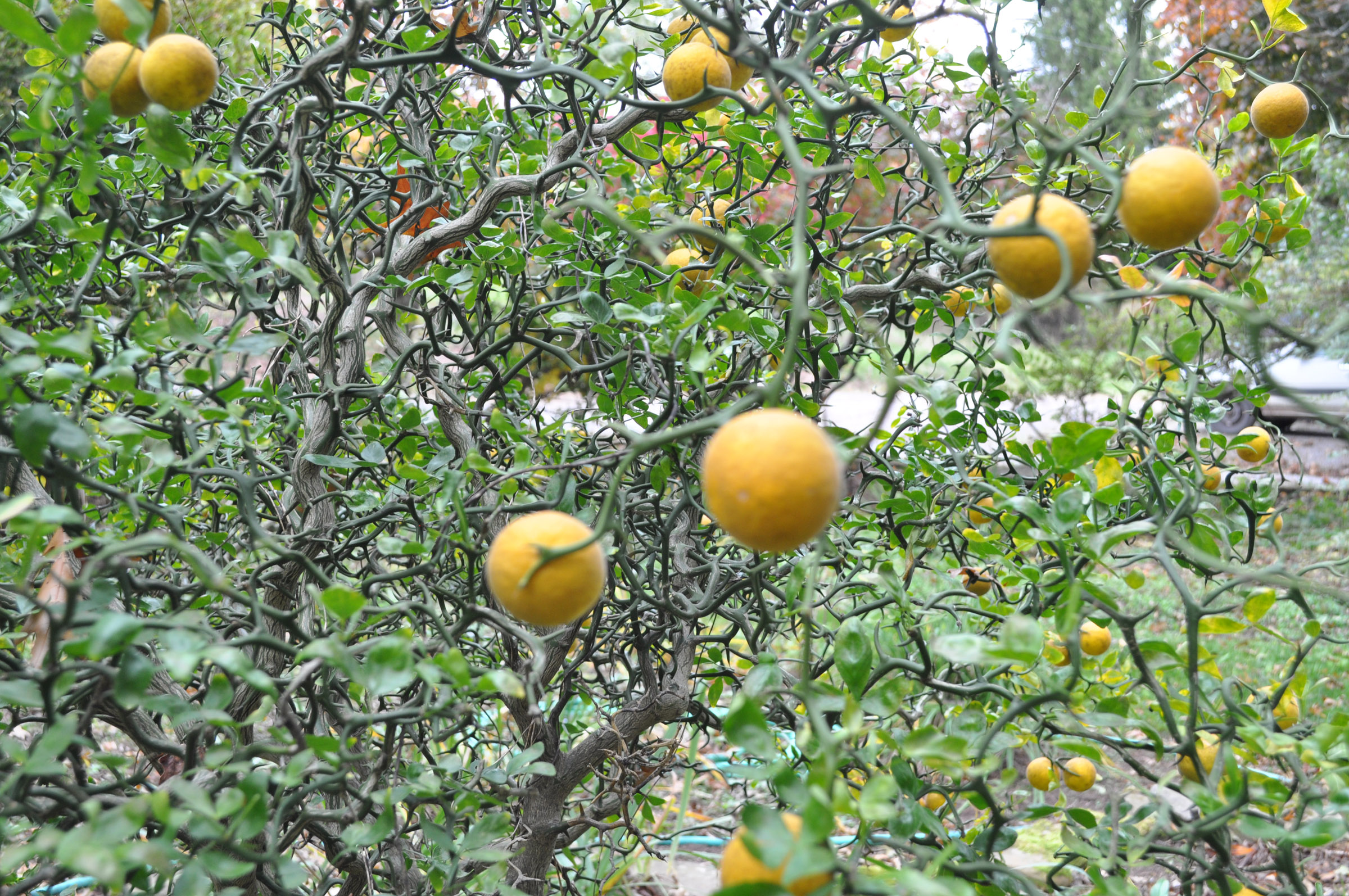
I have just a few questions for you, Lee:
Have you ever thought of training your small herb trees into more interesting Bonsai shapes? I consider those to be works of art and all my seedlings will eventually be bonsai’d. Also, zi can send you some Spanish oregano seeds or seedlings this year which is hardier than regular oregano and grows with huge massive shoots sometimes curving back and forth 10-20 Feet or more. These plants are very hardy and just need to be watered when dry. They have somehow survived in a north east Wisconsin apartment window for about 30-40 years. And I have sometimes just not watered them and still they live!! Their shapes is like that of a vine. I may have already sent you photos. I can always send you more.
But does it taste/smell good. If so, yes, please do send seeds. Thanks for the offer.
I am wondering why my rosemary plants never survive the winter indoors. I have it in a cool room in an east facing window.
My guess its that the plants dried out. It’s hard to tell when they need water. If in doubt, I water. I used t lose them regularly in winter. No longer.
My daughter gave me a rosemary plant that has survived on my kitchen windowsill in Gardiner, New York for more than 10 years so far. It resembles a bonsai, which I find aesthetically pleasing. A brush of the hand releases the fragrant aroma. We try to restrain ourselves from harvesting to often in the winter but use it often in the spring and summer.
Yes, rosemary looks pretty and is very aromatic. My two small “trees” provide all the fresh rosemary we need all winter.
I agree but chives don’t thrive
French Tarragon gets my vote! Every year in late fall I dig up a clump from my herb garden, trim the tops down completely, and then pot it up in free-draining, fresh soil with a dressing of compost. In four to six weeks it puts on enough growth to start harvesting: wonderful with eggs, chicken, and in a vinaigrette. I place mine under grow lights, and it does really well; I can’t speak to how it would fare with just window light. Along with rosemary, fresh tarragon is a must-have winter treat for me, and come spring, I re-plant it in my garden.
Thanks for the comment. I might give tarragon a try for winter herbary.
I’ve been able to keep Thyme out on the deck the last few winters in a 12″ diameter pot. The sprigs dry out somewhat over the winter, but have made it thru to Spring these last 3 years. While cooking, I just step outside, cut a bunch and I’m in business.
Survival isn’t the problem; thyme is very hardy. But greenery for cooking and for beauty are lacking for thyme in winter, at least in my experience.